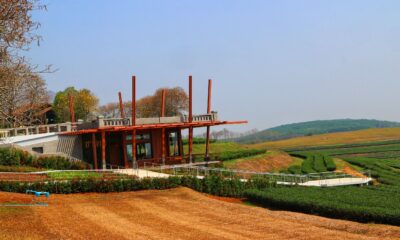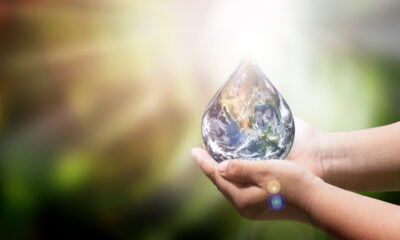

Features
Nutrients and water: closing yield gaps
Paul West of the University of Minnesota’s Institute on the Environment writes about a recent study conducted by some of his colleagues about changes in nutrient and water management to reduce the yield gap.
Several reports estimate that we need to double current crop production by 2050 in order to meet the needs of a growing population that eats more meat and uses more crops for fuel. Some strategies–like reducing waste and reducing meat consumption–would reduce pressure on our land and water resources and free up more food calories that are potentially available.

Figure 1. Yield gaps of wheat, rice, and maize. Green areas are near their potential, whereas red areas are low performing. Large yield gains are possible in Eastern Europe, southern Africa, and parts of Asia. (Click to enlarge).
But we commonly assume that increasing crop production will come at a cost of increased environmental damages to our climate, water, and natural habitat. It turns out that does not have to be the case.
In their recent article in Nature, Nathan Mueller and colleagues estimate that yields could be increased for most major crops by 45-70%, with the biggest opportunities in Eastern Europe, sub-Saharan Africa, East Asia, and South Asia (see Figure 1).
The vast majority of yield variability within a particular climate is from differences in nutrient and water management. This is great news, as it means that these yield gains are possible with today’s seeds and management practices.
Many foundations and companies emphasise the need for seeds that utilise water and nutrients more efficiently. That’s a great mid- and long-term strategy, but yields can be increased a lot in the meantime through changes in management.
Nutrient and water management will always be a key part of the solution in many areas where hunger is currently widespread, soils are depleted of nutrients, and the climate is arid.

Figure 2. Change in nitrogen application rate needed to close yield gaps. Additional fertilisers, such as nitrogen, are needed to close yield gaps in many places. However, places like China, India United States, and Western Europe could reduce fertilizer use while still maintaining high yields. (Click to enlarge).
Yes, in most regions it will require additional nutrients or water to boost yields. Crops are notoriously inefficient in their use of both organic and mineral fertilisers–they typically only utilise half of what’s applied–so additional management practices may be needed to ensure water quality is maintained.
However, fertiliser application could be greatly reduced in many areas while still maintaining high yields (see Figure 2).
Mueller and colleagues estimate that current yields for maize, wheat, and rice could be maintained while reducing global input of nitrogen and phosphorus by 28 and 38 percent, respectively. The biggest opportunities for these reductions are in China, United States, Western Europe, and India.
Analyses like this study help define what’s biologically and physically possible. Ideally, lessons learned here can be used to help guide investments in markets and infrastructure through a combination or public and private capital, policy, and education.
Paul West is the chief collaboration officer for the Global Landscapes Initiative, housed within the University of Minnesota’s Institute on the Environment (IonE). You can follow him on Twitter: @coolfireconserv. His post originally featured on EcoAgriculture’s Landscapes for People, Food and Nature blog.


 Environment10 months ago
Environment10 months agoAre Polymer Banknotes: an Eco-Friendly Trend or a Groundswell?

 Environment11 months ago
Environment11 months agoEco-Friendly Home Improvements: Top 7 Upgrades for 2025

 Features9 months ago
Features9 months agoEco-Friendly Cryptocurrencies: Sustainable Investment Choices

 Features10 months ago
Features10 months agoEco-Friendly Crypto Traders Must Find the Right Exchange






























